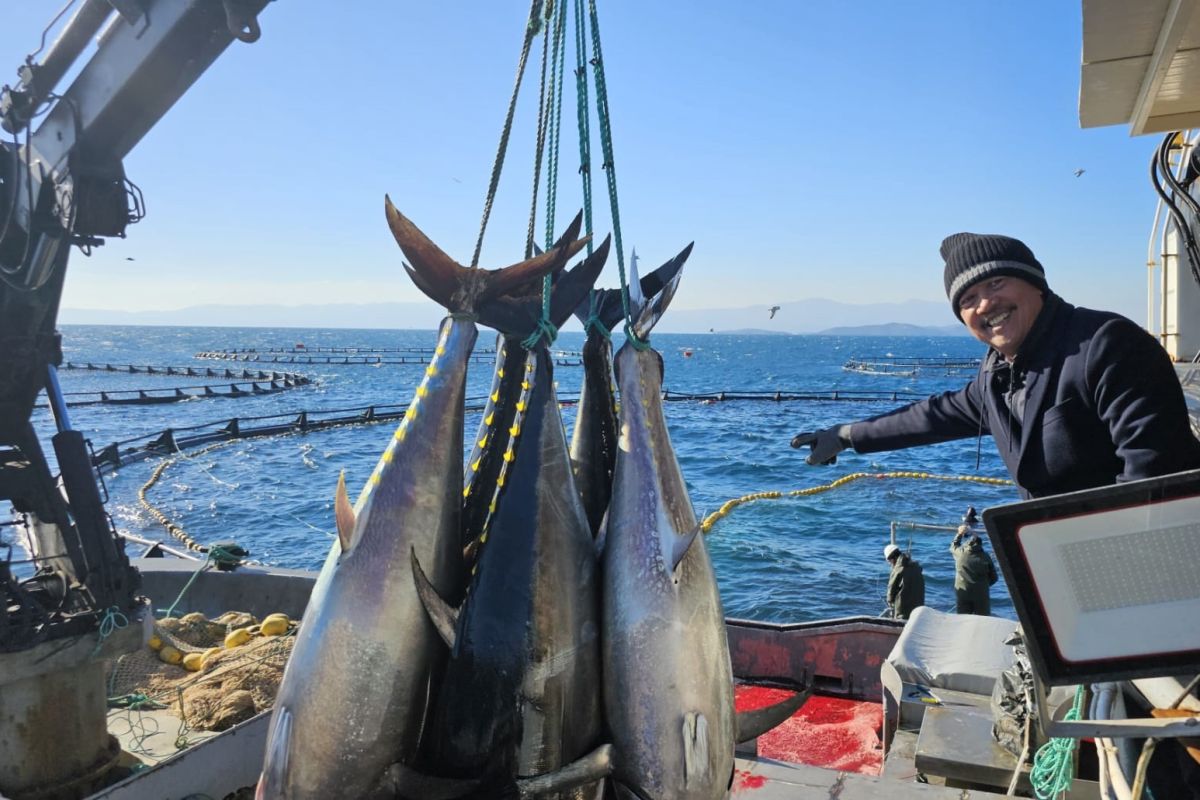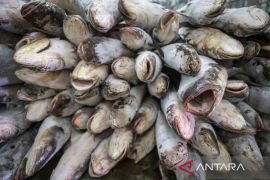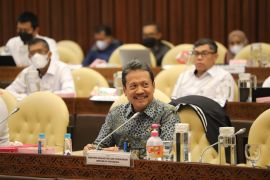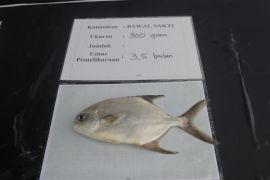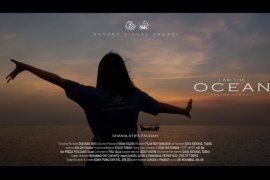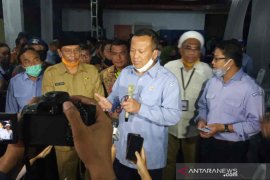For instance, WPPNRI 714 covering Tolo Bay and the Banda Sea and WPPNRI 715 covering the waters of Tomini Bay, Maluku Sea, Halmahera Sea, Seram Sea, and Berau Bay, are leading in tuna fishery production, reaching 11,090 tons from a potential of around 13 thousand tons per year.
With production data from one region only, Indonesia has the potential to become a leading country in the global and national fisheries market while still prioritizing environmental sustainability in its utilization process.
This is in line with the policy of the Ministry of Maritime Affairs and Fisheries (KKP), namely the blue economy priority that includes expanding marine conservation areas, quota-based measurable fishing, developing sustainable aquaculture in marine environment, and coastal and inland fisheries.
There is also a policy to monitor and control coastal areas and small islands as well as handling plastic waste in the sea through the fishermen's participation movement, or called the National Movement for the Love for the Sea Month.
Measuring tuna potential
Tuna is sought after by Japanese culinary lovers who are familiar with fresh, uncooked seafood, or sashimi.
The economic potential of this fish is also promising. In 2022, Indonesia was able to produce 301,799 tons of tuna, with a value of Rp10.77 trillion (US$1= Rp15,854). With this achievement, domestic tuna consumption and utilization should be promoted more intensely.
Tuna falls in the same family as skipjack tuna and mackerel tuna (TTC), a type of fish often consumed by Indonesian people.
Not only for domestic consumption, but the Indonesian TTC has also been absorbed by foreign markets, such as the United States, Japan, Thailand, Saudi Arabia, the European Union, Australia, Vietnam, England, and the Philippines. In fact, Minister of Maritime Affairs and Fisheries Sakti Wahyu Trenggono stated that TTC production was the largest in the world, contributing 15 percent to the global market.
Meanwhile, the ministry also recorded that TTC commodity exports to China in 2023 experienced a high increase in volume, reaching 518.4 percent as compared to the same period in 2022, as conveyed by the ministry’s Director General of Strengthening the Competitiveness of Marine and Fishery Products (PDSPKP), Budi Sulistiyo.
TTC commodity exports in 2023 reached 3,391 tons, while products exported to China include frozen whole forms accounting for 80.47 percent of the total exports, followed by frozen boneless meat cuts (fillets) amounting to 18.36 percent and fresh or chilled form at 1.17 percent.
Apart from China, in a bid to reach a wider market in the East Asia region, the ministry also penetrated the Japanese market by negotiating export tariff posts to Japan, from 9.6 percent to zero percent for tuna commodities, with the types of processed products for canned tuna and skipjack as well as two tariff posts for katsuobushi with HS Code 1604.1-091 and other tuna with HS Code 1604.14-099.
Through the agreement to reduce export tariffs, which is expected to take effect this year, it will be able to sell TTC to the Japanese market.
Meanwhile, for the European Continent, the ministry recorded that the TTC commodity reached US$101 million, or an increase of 15.64 percent as compared to 2022. The commodity was mostly exported in the form of boneless meat cuts (fillets), 85 percent; canned form, 7.68 percent; frozen, 6.57 percent; and other forms, 0.17 percent.
Introducing Indonesian tuna to the world
In 2024, the KKP Ministry is also focusing on the downstream side through the PDSPKP Directorate with a program titled "Indonesian Declaration of Tuna Year 2024" to strengthen the competitiveness of tuna commodities in global and domestic markets.
The declaration is a form of big commitment to strengthening the competitiveness of this commodity. The ministry has prepared several programs to succeed the declaration, including a thematic tuna bazaar and taking part by displaying Indonesian fishery products at the 2024 Seafood Expo North America (SENA) exhibition in Boston, the US, last March.
The ministry will also take part in organizing Tuna Day on May 6, 2024, in Surabaya in collaboration with the Indonesian Hotel and Restaurant Association (PHRI), the tuna fisheries association; tuna talk campaign in Bitung; tuna campaign with modern retail, as well as carrying out National Fish Day activities with a tuna theme.
KKP, which facilitated Indonesian fishery products at the SENA 2024 event in Boston, also recorded a potential trade value of US$58.47 million, while tuna commodities could generate a transaction value of US$29.50 million, or 50.45 percent of the total potential transactions.
Boosting production
So far, Indonesia is able to produce tuna by catching it and not through cultivation or farming. Hence, the KKP Ministry is looking for ways to increase this high-value commodity production to bring impact on the national economy growth.
In early 2024, Minister Trenggono flew to Turkey to study tuna cultivation technology to boost tuna productivity and maintain its sustainability.
The ministry remarked that tuna cultivated in the Izmir Sea, Turkey, is categorized as Atlantic bluefin tuna. Tuna in that area comes from catching baby tuna from the wild that are slowly herded to cultivation locations for about five to six months in cages measuring 50-60 meters, with a depth of 18 meters.
The cultivation development plan is a concrete step for the Indonesian government to eradicate illegal fishing (illegal, unreported, unregulated fishing/IUUF) in the country. Regions, such as Kupang and Morotai waters, are considered ideal to implement the system.
Related news: Indonesia's certified tuna fishermen enjoy premium selling prices
Related news: Turning the tide toward sustainable fishing in Central Maluku
Editor: Rahmad Nasution
Copyright © ANTARA 2024
